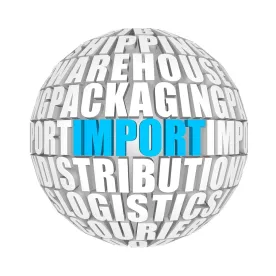On February 24, 2022, the U.S. Department of Commerce’s Bureau of Industry and Security (BIS) imposed sweeping restrictions on exports to Russia in response to an invasion of Ukraine. The key changes were threefold:
-
BIS adopted a “presumed denial” export licensing policy for Russia, covering all controlled commodities subject to the Export Administration Regulations (EAR).
-
BIS expanded existing export controls on Russia to include certain foreign products produced outside the United States using U.S. technology.
-
BIS placed 49 new Russian entities on the Entity List — a move that prohibits the sale or export of any U.S.-origin products, software, or technology to these parties.
Multinational companies that export products made with U.S. components should immediately familiarize themselves with these new restrictions before exporting any products to Russia.
New Export License Requirements
BIS now requires a license for exporting any controlled commodities to Russia. This new restriction includes items appearing on the Commerce Control List (CCL) and classified under Export Control Classification Numbers (ECCNs) in Categories 3 through 9. Collectively these categories include semiconductors, microelectronics, and telecommunications items as well as lasers, sensors, navigation equipment, avionics, marine equipment, and aircraft components. These changes mirror similar commodity controls imposed by the United Kingdom and European Union (EU), which cover many of the same categories.
Companies that export any items in these categories will now need to obtain a BIS license before exporting, re-exporting, or transferring them to Russia. Significantly, however, BIS has adopted a “presumption of denial” for all items requiring an export license for Russia. This means that BIS will not issue a license if the proposed exports will directly or indirectly benefit the Russian government or the Russian defense sector. It also means that BIS is currently less likely to grant an export license even if the underlying business is exclusively commercial.
These same restrictions also apply to so-called “deemed exports” — transfers of certain controlled technologies to Russian nationals located within the United States — even if they have a valid work or travel visa. Limited exceptions cover Russian nationals with Legal Permanent Resident (i.e., green card) status in the United States. Companies that employ Russian nationals in the United States should immediately evaluate whether these employees hold a green card and, if not, whether so-called “deemed export licenses” may be required.
Other narrow exceptions address exports involving safety, humanitarian assistance, civil telecommunications infrastructure, and various government-to-government activities. There are also some exceptions designed to support the operations of partner country companies working in Russia. These include narrow exceptions for items for use by the news media, certain software updates, and certain encryption items or communications devices not destined for Russian government end users. Each of these exceptions applies narrowly, however, and conditions in Russia and the surrounding region may complicate such exports. Companies that plan to rely on these exceptions should carefully review the relevant requirements before proceeding.
Foreign Direct Product Rules
BIS also established two new Foreign Direct Product Rules (FDPRs) that impact the sale of certain products manufactured outside the United States. The first rule applies to any exports, re-exports, or transfers involving Russian territory and controls foreign-produced items that are either (1) the direct product of certain EAR-controlled software or technology that appears on the CCL, or (2) major components or products that are the direct product of certain EAR-controlled software or technology appearing on the CCL.
Foreign-produced items subject to the EAR under this FDPR will now require a BIS license before they can be exported to Russia, and BIS will apply the “presumption of denial” standard when reviewing license applications. Because this FDPR is so broad in its reach, companies located outside the United States should carefully review any products they plan to export to Russia for relevant U.S.-origin content or technology. Undertaking this review is particularly important for companies manufacturing and exporting products to Russia from countries in the Asia-Pacific region, where countries are somewhat less likely to impose their own controls on exports to Russia.
The second FDPR covers the Russian military, but here BIS has already indicated that no license exceptions are available. Like the broader country-based FDPR discussed above, this restriction applies to foreign-produced items that are the direct product of any EAR-controlled software or technology on the CCL, or major components or such products that are the direct product of any EAR-controlled software or technology on the CCL.
Significantly, BIS also expanded restrictions on Russian Military End-Users (MEUs) and related military end uses to cover all items subject to the EAR — not just those classified under an ECCN. Although there are limited exceptions for food, medicine, and other humanitarian items designated “EAR99,” these exceptions do not apply to Russian government end-users or Russian State-Owned Enterprises (SOEs). It is also important to note that this second FDPR targeting Russia MEUs does not currently apply to exports from NATO and EU member states. Many of these jurisdictions have committed to issue their own sets of export restrictions, however, so companies should carefully consider any applicable local requirements before exporting to Russia.
New Entity & Territory Restrictions
BIS also added 49 new companies to the Entity List. Most of these parties previously appeared on the MEU List, which BIS also expanded to include additional parties in the Russian defense industrial base. BIS also imposed export restrictions for the disputed Crimea, Donetsk, and Luhansk regions of Ukraine — all of which are currently under Russian military occupation. Collectively this means that companies must obtain a BIS license before exporting, re-exporting, or transferring EAR-controlled items to anyone on the Entity List or anyone in these disputed regions. And because BIS now applies the “presumption of denial” when reviewing these license applications, the likelihood of obtaining U.S. export authorization is greatly diminished.
Foreign Export Control Requirements
The EU, Japan, Australia, United Kingdom, Canada, and New Zealand have imposed or are currently imposing substantially similar export controls on Russia and Russian parties. This multilateral approach to controls dramatically curtails the quantity and scope of products that can now be legally exported to Russia. These foreign laws also are likely to overlap with U.S. export control requirements — especially when products made in foreign countries trigger the FDPRs discussed above or otherwise meet the 25 percent de minimis threshold under the EAR. Given the scope and complexity of these requirements, companies around the world should familiarize themselves with these overlapping rules and closely evaluate the content of any pending exports before exporting any goods, software, or technology to Russia.
The authors of this article appreciate the contributions of the entire Foley & Lardner International Government Enforcement Defense & Investigations Team.





 />i
/>i
